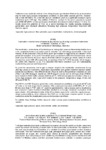Por favor, use este identificador para citar o enlazar este ítem:
http://www.alice.cnptia.embrapa.br/alice/handle/doc/661967| Título: | Formulation and quality evaluation of a clarified mixed fruit juice. |
| Autor: | CANDÉA, T. V.  NAKANO, L. A.   MATTIETTO, R. A.   CABRAL, L. M. C.   MATTA, V. M.   |
| Afiliación: | T. V. CANDÉA, UFRRJ; L. A. NAKANO, UFRRJ; RAFAELLA DE ANDRADE MATTIETTO, CPATU; LOURDES MARIA CORREA CABRAL, CTAA; VIRGINIA MARTINS DA MATTA, CTAA. |
| Año: | 2009 |
| Referencia: | In: EUROPEAN FEDERATION OF FOOD SCIENCE AND TECHNOLOGY CONFERENCE, 2009, Budapest. New challenges in food preservation: processing: safety: sustainability. Wageningen: EFFoST, 2009. 1 CD-ROM. Ref. P131. |
| Descripción: | Fruit juice marketing has been continuously increasing all over the world due to the consumers search by natural and healthy products added to their potentiality as functional. The objective of this work was to study the formulation of a clarified mixed fruit juice based on their bioactive compounds. The raw materials were açaí pulp, pineapple and grape juice, chosen due to their composition on sugars and organic acids aiming at sensory acceptability and bioactive composition. Açaí and pineapple were clarified by microfiltration using ceramic membranes with 0.022m2 of filtration surface and their permeate fractions were collected in sanitized packages and afterwards frozen storage. The commercial pure grape juice is already clarified and did not require this process step. A two factor simplex-centroid design was used for the formulation, fixing the açaí juice concentration and varying only the two other juices contents performing five treatments. The formulated juices were analyzed for determination of anthocyanins and total phenolics. The results showed an expected behavior of a positive correlation between the concentrations of these functional classes of compounds and the grape juice content. As the açaí concentration is fixed, grape is the component richer in both phenolics and anthocyanins, which explain the results. The formulation containing 20% açaí, 80% pineapple and no grape presented the lowest values, 4.34 mg/100g anthocyanins and 68.95 mg/100g total phenolics, while the highest values, 20.87 mg/100g anthocyanins and 175.21 mg/100g phenolics were verified in the formulation that contained 20% açaí, no pineapple and 80% grape. The Tukey test showed significant difference between the five formulations with 95% of probability. |
| Thesagro: | Clarificação Fruta Tropical Suco de Fruta |
| Tipo de Material: | Resumo em anais e proceedings |
| Acceso: | openAccess |
| Aparece en las colecciones: | Resumo em anais de congresso (CTAA)  |
Ficheros en este ítem:
| Fichero | Descripción | Tamaño | Formato | |
|---|---|---|---|---|
| 2009223.pdf | 140,07 kB | Adobe PDF |  Visualizar/Abrir |









